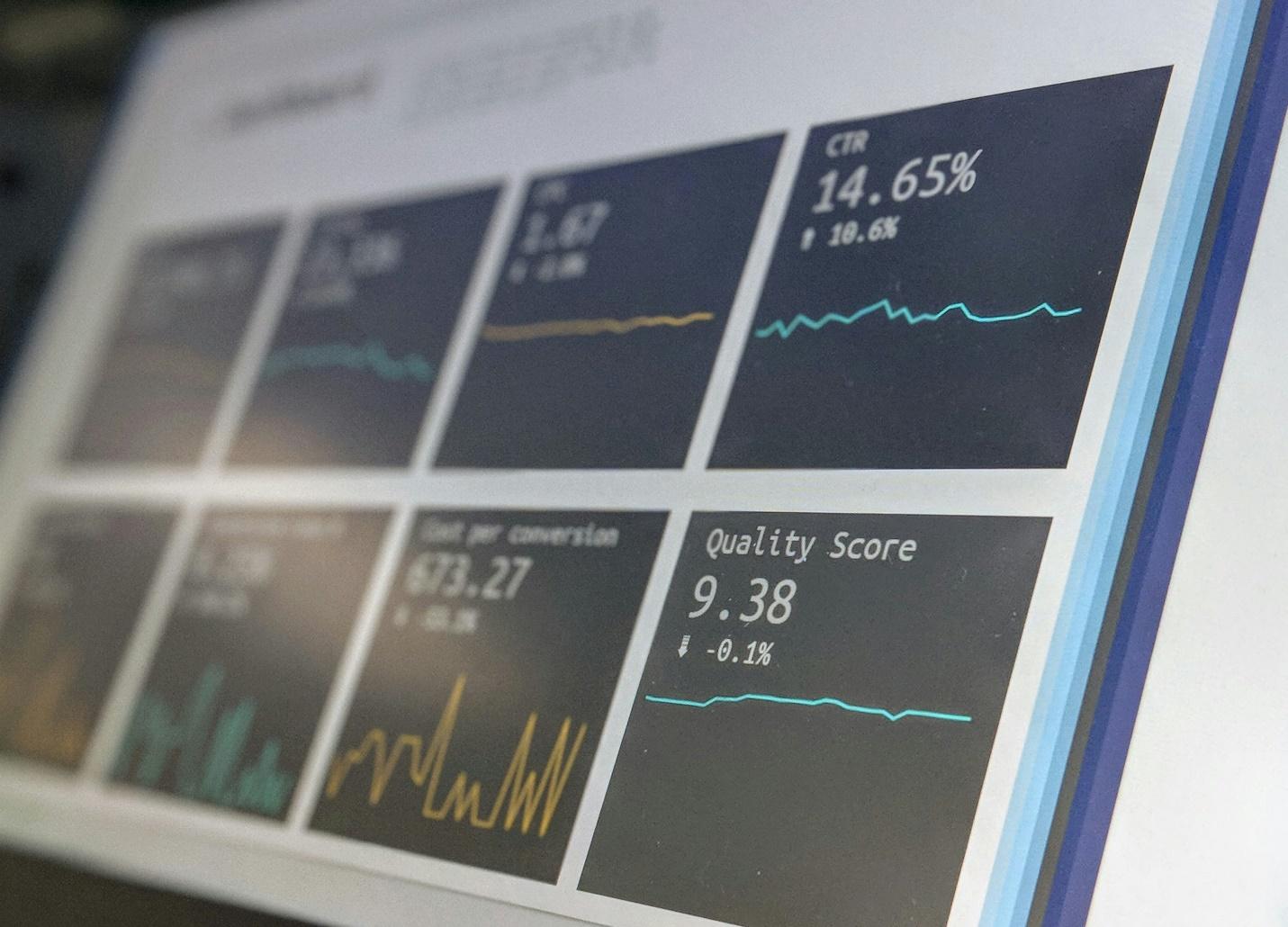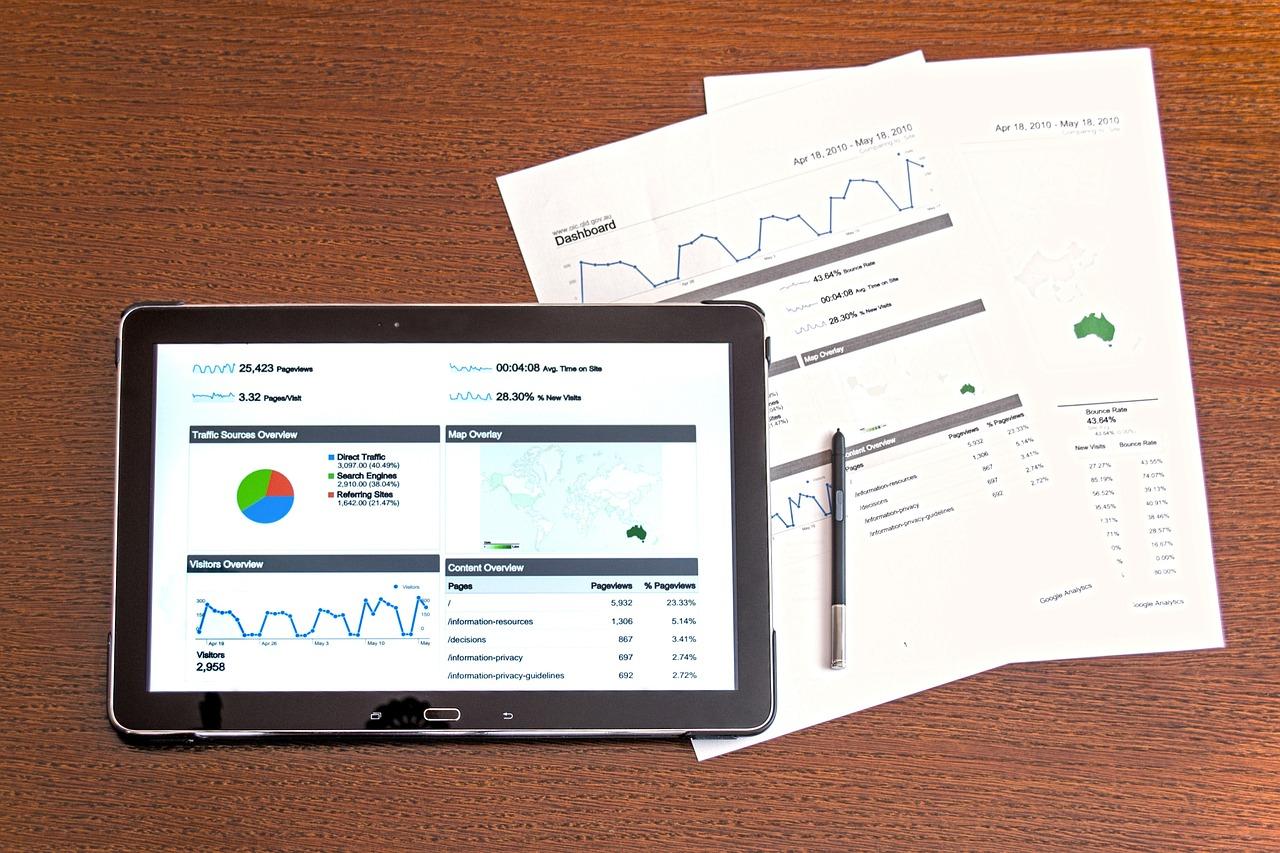Do you have an agency or a company that provides services to residential and commercial clients? If you’ve managed to make it past the first pivotal year—when roughly 20% of new businesses fail, according to the Small Business Administration—then you’re probably trying to figure out how to grow and develop your offer.
You could take an organic approach and rely on word-of-mouth marketing and some sales campaigns. However, if you don’t measure how your company performs over time, then you can’t develop an appropriate marketing and growth strategy to best utilize your newfound success.
Enter KPIs, or Key Performance Indicators. It’s nearly impossible to mention any kind of business strategy without bringing KPIs into the equation, and for a good reason. They work.
And if you implement agency KPI measurement into your favorite project management software, you can get a precise overview of how your business is growing. Here’s what you need to know.
What Are Agency KPIs Exactly?
Key Performance Indicators are measurable values that track your progress towards a certain goal. They are similar to traditional metrics in the sense that you can quantify them based on current trends in the company. By monitoring relevant KPIs, you can determine whether you’re on track, identify areas for improvement, and ultimately achieve success.
However, what makes KPIs useful in the long term is their objective-dependent focus. For example, a goal might be to obtain 20% more clients than the previous year. Once you set your goal and break it down into more manageable chunks, you can create performance indicators that align and let you know how far along you are at any given time. In that case, you can use KPIs such as website traffic, landing page conversions, cost per lead, lead qualification rate, and sales conversion rate.
As you can see from the example, goal-driven agency KPIs transcend any single department or project. Instead, they work towards the big picture, helping you realize your company’s potential. That’s why agency KPIs are considered superior compared to simple metrics. While you still have to go into the nitty-gritty of how each department functions (due to needing to track its progress), KPIs allow you to take a holistic picture of how that progress correlates to business success.
Types of KPIs
Within our agency, we ensure to track certain key performance indicators (KPIs) to measure our success. A significant portion of these revolves around paid search, which you can learn more about in our article on paid search KPIs. Selecting the appropriate KPIs helps to ensure the best possible outcomes for our clients.
In general, there are broad categories of KPIs that an agency can track at any time:
- Strategic
- Financial
- Operational
- Leading
- Sales
- Customer
However, don’t feel constrained by a particular type of KPI. Various industries will refer to one KPI as belonging to one category, while others will put that same KPI into a different one. Luckily, there’s enough overlap of useful KPIs regardless of the industry, so you’ll be able to get a good picture of what you need to do regardless of how you classify them.
Across these broad groups, there are dozens or even hundreds of different agency KPIs you can track. But that doesn’t mean that you should.
If you attempt to track everything about your company at once, you’ll likely get bogged down in too much detail and won’t be able to discern how a particular metric relates to your goal.
Luckily, there’s a simple way to simplify your reporting process.
How to Track KPIs to Maximize Growth
Once you set a goal for your company, you need to identify which agency KPIs align best with that goal. This can be easier said than done, however. Not only do KPIs need to be precisely measurable, but also actionable. It won’t do you any good if the metrics you’re tracking can’t be influenced or acted upon by a nudge in a different company direction.
But how exactly do you keep score of the numbers?
Well, the easiest way is to write everything down on sheets (paper or digital) and manually input any new changes in the company.
Naturally, this is extremely time-consuming and will likely detract you from your true goal—operating the company day-to-day.
And after all the data is compiled, someone needs to create a useful report out of it, which takes time and training. This can create unnecessary overhead costs that intrude upon your bottom line—budget.
Even if you have someone working day in and day out filling sheets with valuable data that you’re tracking, you leave your metrics open to human error.
Alternatively, you can embrace modern technology and use a customer relationship management (CRM) system and a project management system.
With these two systems in place, you can more easily keep track of what is going on in your company and at what stage of the project you’re in with every single client you have.
Then, you can integrate the systems with reporting software to get accurate reports based on all the data you have collected. Best of all, the advancements in AI software allow you to save more time by offloading data entry and sorting tasks to an AI assistant and then focus on interpreting the results.

How to Choose Which Agency KPIs to Track
As mentioned before, there are so many available metrics you can use as your KPIs that tracking all of them is highly unproductive. When trying to determine which KPIs might be worthwhile tracking, follow the SMART criteria:
- Specific
- Measurable
- Actionable
- Relevant
- Time-bound
Yes, these are the same concepts as setting a goal. But that’s pretty much how KPIs work in a nutshell: your company sets a goal to achieve within a timeframe, and then KPIs ensure that it’s on track for that goal.
In particular, your agency KPIs must align with your team’s values and goals. Usually, industry standards will dictate which KPIs will work best for your given situation, so you can look at industry leaders and how they manage their business.
Additionally, you have to determine who is responsible for tracking and reporting on the agency KPIs you choose. While you’ll most likely use CRM and project management software to have a good overview of the entire company, there still needs to be a person in charge of making sure that the company doesn’t hit a roadblock. It helps to remove confusion if something goes wrong and prevents people from shifting blame to other team members.
When you do figure out which KPIs to track, don’t ignore any warning signs that the company is doing worse than you thought. You should review your KPIs periodically and switch course if something more urgent comes up that requires additional attention. You don’t need to get stuck in the mindset that the KPIs are the only worthwhile metric of your company’s success. Of course, they matter, but overfocusing on how certain KPIs are tracking might lead you to losing sight of the short-term goals that are propping your company up and helping it survive.
Also, don’t be afraid to adjust your targets every once in a while. If you’re doing better than expected, your company is probably growing beyond what your KPIs are telling you. Adjust your goals accordingly to ensure that the sudden growth doesn’t seem like a statistical error in reports.
The Best Agency KPIs to Track
Since there are so many different types of KPIs, it helps to narrow things down a bit by the type of company that will most likely need to use any given KPI. Even then, some KPIs are so useful that you usually can’t afford not to track them, even if they aren’t wholly related to your current goal.
Here are some metrics you should consider adding to your project management software.
Utilization Rate
Utilization rate refers to what percentage of the time a resource (such as equipment, facilities, or even personnel) is being used. It’s typically expressed as a benchmark of the utilized time or quantity of a resource compared to its theoretical maximum.
The utilization rate is a common service agency KPI when you have a vital resource such as an expert employee that only solves the most severe problems for the clients.
It’s calculated by the following formula:
Utilization_rate = actual_usage / theoretical_maximum_capacity (multiply by 100 to get a percentage)
The actual values and figures you input here will depend on the resource you need to calculate. If you’re calculating the effectiveness of your top staff, for example, you can put in how many hours you’re billing the clients for their expertise. Of course, some resources like employees can’t be maximized, and you need to strike a balance between effectiveness and morale.
It especially comes into effect when calculating costs and budgets. If a resource you have isn’t being used properly, its overhead costs might be getting too much compared to the value you get. On the other hand, a vital resource might not need to be utilized to its maximum so long as the branding and marketing value you receive from it makes it worthwhile.

Profit Margin
Profit margins are another vital metric that can be used as a financial KPI. It’s a rather simple calculation at its core, but it requires careful expense tracking to ensure you get the correct value.
At its core, the profit margin has a simple formula:
Margin = projected_profit / projected_revenue * 100
However, you need to make sure to correctly identify your revenue in terms of profit against costs. As such, it would be more precise to say the formula is:
Margin = projected_profit / (projected_profit – costs ) * 100
According to Oracle NetSuite, the best profit margin for an advertising agency KPI is between 46.5% and 60.1%. Any higher and you’re probably among the top-performing companies in your field, and this KPI probably won’t mean much to you.
Customer Acquisition Cost (CAC)
This might seem like another straightforward KPI, but it’s actually vital for pretty much any agency. However, since different agencies have a different approach to onboarding new clients, you’ll likely need to dig a little deeper when calculating it.
Start with the simple formula:
CAC = (Marketing and sales expenses) / (number of new customers)
This metric is perhaps one of the most vital marketing agency KPIs you can have. It neatly sums up the entire existence of a marketing company and the value it provides to its clients.
If the marketing costs are too high compared to the customers the client is receiving, your approach with that client might be wrong. You’ll likely need to course correct to ensure both sides get a good deal and a prosperous long-term relationship.
New Customers and Churn Rate
These are two seemingly opposing customer-focused KPIs that can create an accurate picture of your marketing, onboarding, and long-term retention efforts.
While the definition of new customers is strikingly simple, the churn rate might need to be adjusted based on the time period you’re reporting on. Simply put, the churn rate is the percentage of customers who have tried your products or services and have decided to discontinue the relationship or cancel their subscription.
The churn rate is commonly used to measure client retention and loyalty (the lower the better). If a churn rate spikes after a new campaign, it probably didn’t have the intended effect.
Keep in mind that the churn rate will only tell part of the story. If the number of new customers far outstrips the negative effects of the churn rate, then the campaign is probably doing alright.
You can quickly calculate your churn rate and how many new customers you have by using Bonsai CRM. It allows you to quickly overview all clients you had over a certain period and determine what led to them no longer working with you.

Days Sales Outstanding (DSO – Days Receivable)
This is one of the more insidious financial KPIs that many companies don’t track properly. It’s a common reason for businesses failing to prosper. This agency KPI measures how long it takes for your clients to pay you for the work you complete.
Going back to NetSuite’s statistics, the recommended time for a client to pay you is 45 days or fewer. Usually, businesses that have only started tracking this metric or don’t have a reliable invoicing tracking system in place have DSOs in the range of 100 days or more.
A high DSO can make it difficult to plan your budget and balance your expenses against your income. That’s why you should invest in Bonsai invoicing software to track your outstanding sales for you. With an automated system, you can set up reminders for your clients and even provide a handy platform where they can pay you directly.
Customer Lifetime Value (CLV)
This metric represents how much a single client is going to invest into your business throughout your business relationship.
However, this is only a forecasted value, so you need to be careful not to overestimate how much a client is going to stick around with you. In the best-case scenario, the value assumes that the client will stay with you indefinitely. While you should still treat the value as-is (i.e., the best-case scenario), a high churn rate might severely impede your ability to create value from it.
Return on Investment (ROI)
Many agencies consider the ROI to be the be-all-end-all of agency KPIs that need to be tracked. It applies to pretty much any industry as is largely project-agnostic.
The ROI can be neatly calculated per client, if you have their projected Customer Lifetime Value as well as your CAC: ROI = CLV / CAC. This is only one formula that can give you a neatly calculated ROI, and there are many others (net profit / investment). Which one you choose will largely depend on what exactly you are trying to track the ROI.
The ROI is an excellent agency KPI to track because it neatly packs both the projected income and the associated costs into a simple number that’s easy to grasp. If you’re looking for an effective way to measure the ROI on your past projects, you’ll need to have Bonsai’s bookkeeping software. It creates a clear overview of each client’s payments, and you can customize their profile with all the associated costs and person-hours that you invested into onboarding them.
Conversion Rate and Upsell Rate
The conversion rate is a rather simple metric that is commonly used as a marketing agency KPI. It tells you how many clients you have onboarded versus how many leads you generated from a marketing campaign.
Unlike most numbers that we mentioned before, the conversion rate might look depressingly small by comparison. According to MailChimp, most websites will fall between 2% and 5% conversion rate, regardless of the industry they’re targeting.
That also means that even a minor change in conversion rates can have a drastic impact on how many client’s you’re able to onboard.
A good conversion rate naturally leads to an excellent ROI on your campaigns and services in general. It means you don’t have to invest nearly as much into acquiring new clients. However, keep in mind the aforementioned churn rate. Having many leads convert into paying customers doesn’t mean nearly as much if most of them end up leaving relatively soon afterward.
On the other hand, the upsell rate is a bit more interesting. It indicates how many clients bought additional services after being onboarded. It’s one of the critical creative agency KPIs to track because they heavily rely on continuing their relationship with a single client through constant additional or new work.

SEO Agency KPIs
This is a relatively broad category of marketing-adjacent concepts that relates to all aspects of Search Engine Optimization (SEO). It can include the following:
- Keyword ranking
- Domain ranking
- New backlinks
- Organic traffic
- Website impressions
- Click-through rate (CTR) and bounce rate
Even technical aspects of the website, such as loading speed and file size, can play a role in how your website can attract new clients. Web analytics tools such as Semrush can help you learn all the ins and outs of SEO and how to improve these metrics.
Putting It All Together
To track KPIs easier, you need to have all your customer, project, and payments data in one place. It will allow you to seamlessly calculate your profit margins, long-term customer engagement, and project your earnings based on previous records.
And there’s no better way to do so than with Bonsai. Bonsai is an all-in-one CRM, bookkeeping, and project management software that allows you to run your entire business with a single platform. Additionally, Bonsai will help you develop a client platform to ensure your customers can keep track of their projects and pay you quickly.
Start with a free Bonsai account today and learn how you can get more done with less.







